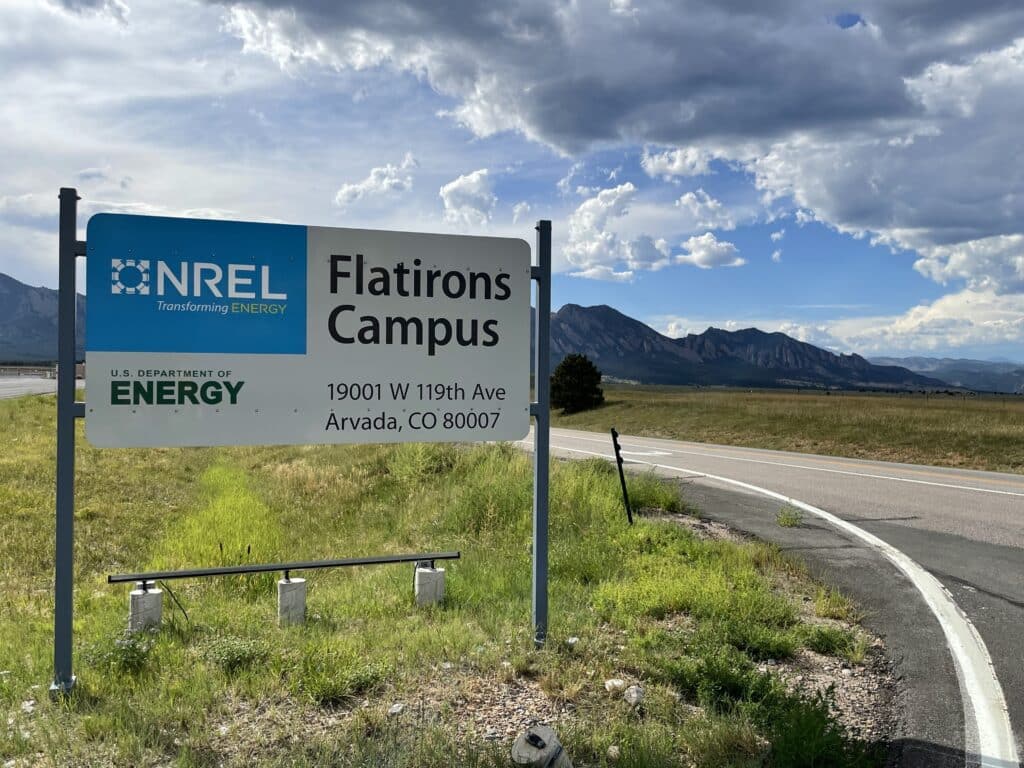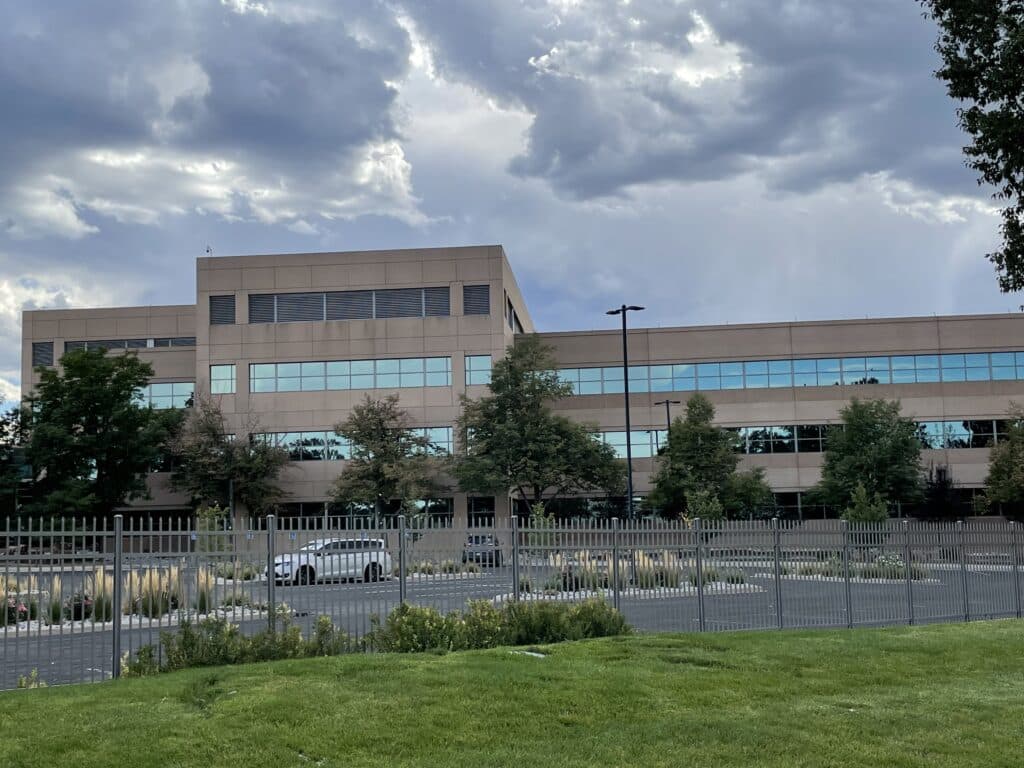Climate ‘game-changer’
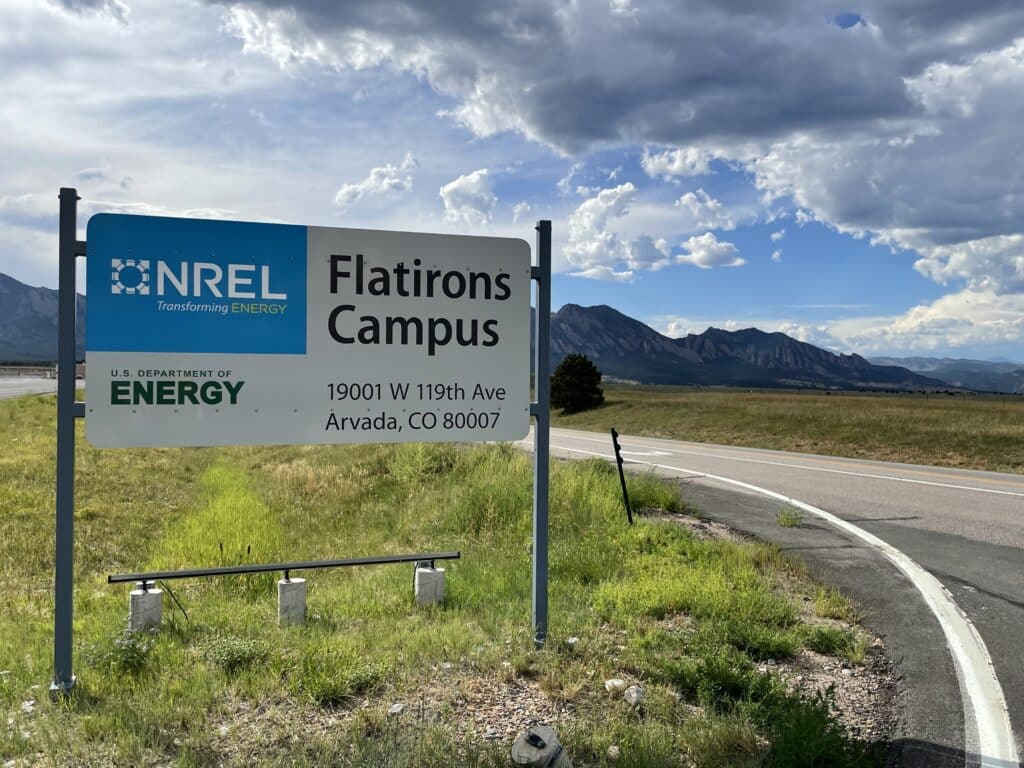
High atop Table Mesa in southwest Boulder, visitors to the National Center for Atmospheric Research enjoy more than just a panoramic view.
From the vantage point of the iconic I.M. Pei-designed building, its parking lot and the many trails that lead from it, visitors can see firsthand the devastating effects of climate change.
The site in December 2021 offered a horrific view of flames from the Marshall Fire, the costliest wildfire in Colorado history, destroying almost 1,100 homes and seven businesses in Louisville, Superior and unincorporated Boulder County.
Just over a ridge from the NCAR parking lot, the NCAR Fire burned 190 acres near Bear Canyon Trail in March, threatening homes in south Boulder.
And the mesa itself often is nestled in the haze of locally sourced pollution or wildfires from far afield, as smoke from fires in California, Arizona or other western states settles along the Front Range of Colorado.
Beetle kill is visible in trees along the foothills, brought on by rising temperatures.
Efforts to combat such events received a significant boost, Aug. 16, when President Joe Biden signed into law the Inflation Reduction Act, providing $370 billion to address climate change, the largest such investment in history.
“This is a real big deal,” said Antonio Busalacchi, president of NCAR, which employs about 1,400 people, including 1,000 in Boulder. “The IRA is projected to significantly reduce U.S. carbon emissions by 40% by 2030. Underpinning that, it’s investing in crucial research in climate and weather, as well as emerging green technologies, in incentivizing changes in technologies, manufacturing, consumer processes. It’s kind of a very holistic approach.”
A study commissioned by the BlueGreen Alliance from the Political Economy Research Institute at the University of Massachusetts Amherst says that the act could create more than 9 million jobs over the next 10 years.
The Inflation Reduction Act includes:
- Extension of tax credits for solar and wind projects for 10 years, with extension of credits to battery-storage, hydrogen and other new technologies.
- Extension of tax credit benefits — through grants, loans or other means — to municipal utilities and rural electric cooperatives. See related story.
- Up to $7,500 in tax credits for new electric vehicles and $4,000 for used electric vehicles.
- Funds to strengthen climate resilience in national forests.
- Rebates for new electric appliances, including efficient heat pumps, ovens, water heaters, clothes dryers and stoves.
- Tax credits for community solar projects.
- Measures to boost domestic manufacturing of clean technologies.
Colorado’s climate ecosystem
Colorado stands to play a key role in implementing provisions of the new law.
Just as visitors to NCAR’s Mesa Lab can see the negative effects of climate change, they also can glimpse parts of Colorado’s cleantech and climate-research ecosystem that seeks to combat it.
Easily visible are the red tile roofs of the University of Colorado Boulder campus, home to numerous climate-oriented research centers, including the Cooperative Institute for Research in Environmental Sciences, a joint venture of CU and the National Oceanic and Atmospheric Administration.
A short distance down Table Mesa Drive and west on Broadway lie NOAA and the National Institute of Standards and Technology.
Just to the south, one can spy the wind towers of the National Renewable Energy Laboratory’s Flatirons Campus, located at the former Rocky Flats nuclear-weapons plant, just over the Jefferson County line. The project is an extension of wind-research efforts by Golden-based NREL, which provides research, development, commercialization and deployment of renewable-energy technologies.
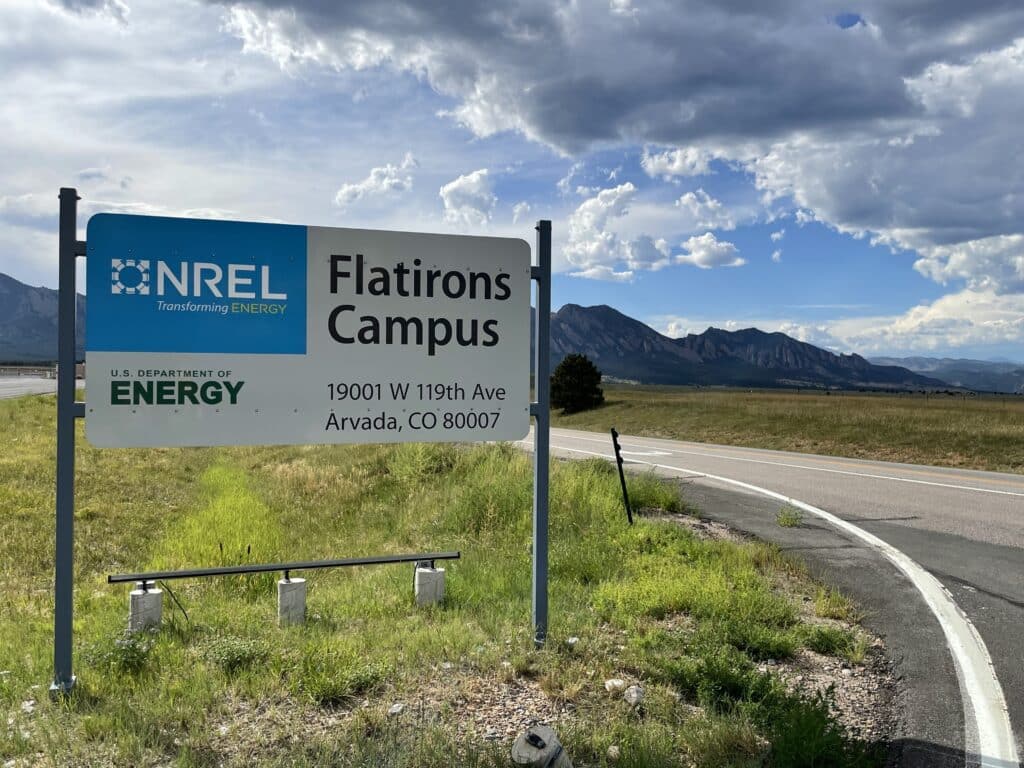
Farther north, out of view, lies Fort Collins, home to Colorado State University and the Natural Resources Research Center.
And it’s not just federal laboratories. Hundreds of cleantech companies — some of which emerged from federal labs and universities such as NREL, CSU, the Colorado School of Mines and CU — dot the Front Range, from Vestas Wind Systems in Windsor to Lightning eMotors Inc. in Loveland to Solid Power Inc. in Louisville.
Cleantech companies work to develop solar, wind, biofuels, power-distribution and battery-storage technologies and products.
It all represents Colorado’s climate-research and cleantech ecosystem, concentrated along the Front Range from Golden and Denver to Boulder, Larimer and Weld counties.
“The ecosystem here in Colorado, particularly on the Front Range, is really second to none, as it pertains to areas like weather, water, climate, aerospace industry, environmental activities,” Busalacchi said. “So the research enterprise here is really well positioned to take advantage of these federal dollars to make society more resilient to weather events as amplified by climate change. We’ve been on the front lines for the last couple of years with respect to the wildfires, going back further to the floods of 2013.”
At NCAR, scientists at the Mesa Lab, together with their colleagues at NCAR’s Centre Green and Foothills campuses in east Boulder — occupying 10 buildings in all — collect data from ground-based stations around the world, from aircraft based at Rocky Mountain Metropolitan Airport in Broomfield and from satellites, all to advance understanding of weather, water, climate and space weather.
Their efforts emerged after the need for better weather forecasting during World War II.
“We gained a much better understanding of the physics and dynamics of how the atmosphere worked,” Busalacchi said of lessons learned during the war.
With the emergence of digital computers in the 1950s, climate science eventually advanced, leading to NCAR’s founding in 1960 by the National Science Foundation.
“Once we started to do weather forecasts with these models, once we started collecting day-to-day weather observations, we could start piecing them together for longer time scales and putting together our models to project further into the future,” Busalacchi said.
NCAR — managed by the University Corporation for Atmospheric Research, a consortium of universities — provides fundamental research on weather, water, climate, air quality and space weather, with data collected from around the world and processed in part at NCAR’s supercomputing center in Cheyenne, Wyoming.
“These high-performance computers allow us to simulate the real world,” Busalacchi said. “There are these governing equations of motion, how fluids flow within the atmosphere and the ocean, how heat is exchanged.”
Busalacchi said he’s encouraged by the Inflation Reduction Act — as well as the recently passed CHIPS and Science Act, noting funds in the IRA for increased funds for NOAA for advanced high-performance computing, restoring and preserving coastal habitats, funds for forecasting to accelerate advances in forecasting, aircraft observations for better hurricane hunting.
Colorado’s lab concentration
Dan Powers, executive director of CO-Labs, a consortium of 36 federally funded research laboratories in the state, said Colorado will play a key role in implementing the climate provisions of the Inflation Reduction Act.
Federally funded research laboratories — predominantly in Boulder, Larimer and Jefferson counties — contribute $2.6 billion annually to Colorado’s economy, according to a 2016 study — the latest available — by the University of Colorado Leeds School of Business, employing almost 8,000 workers and supporting 17,600 jobs.
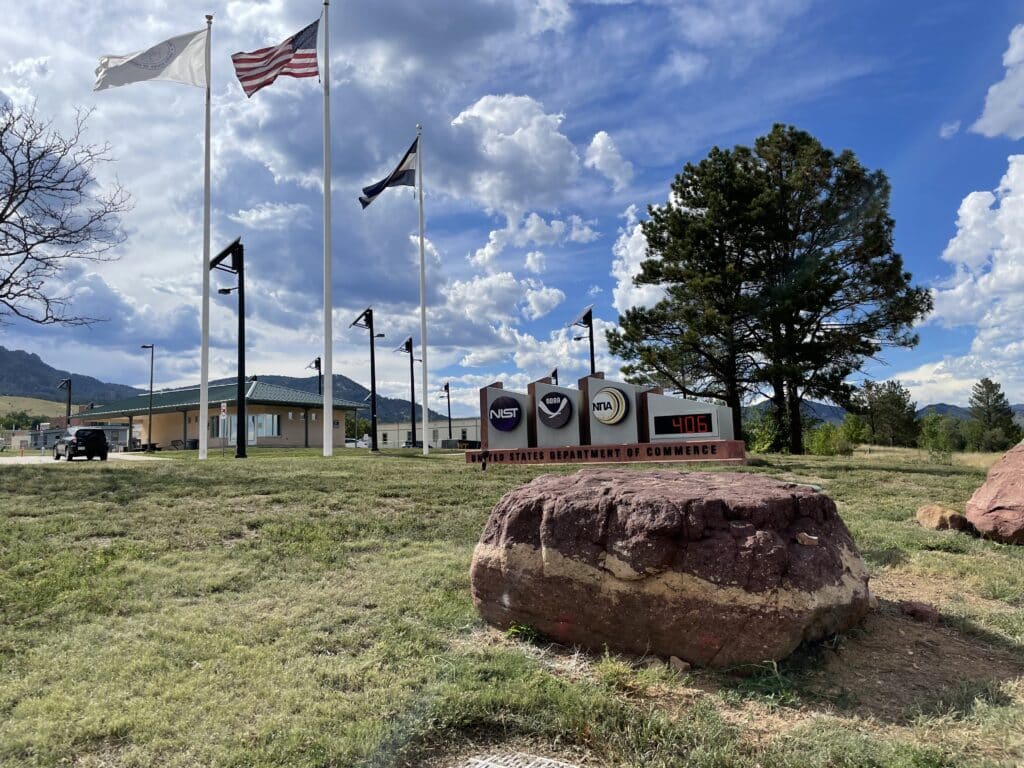
Many of those research centers are engaged in some aspect of climate or environmental research.
“Colorado is a hub for climate science research, one of the highest concentrations of brilliant scientists working on this particular kind of science in the country, and I’m certain that the collective impact of research and data and brainpower here in Colorado will be sought after and definitely leveraged … to guide our transition to a new energy paradigm and an overall resiliency policy effort to mitigate the impact of climate change,” Powers said.
He noted that climate research is concentrated not only at NCAR and NOAA but also at many other institutions, such as the Bureau of Reclamation’s facilities in Denver, the National Ecological Observatory Network in Boulder, CIRES and the Cooperative Institute for Research in the Atmosphere at CSU and others.
“What we provide as a hub for so many federal agencies and types of federally funded research, that all play a part in climate research … It’s definitely uncommon to have this kind of concentration in one state across so many federal agencies,” Powers said. “I’ve not found any other state that has this robust of a spectrum of federally funded research agencies who can combine their work on this topic.”
Powers noted that, in addition to the Inflation Reduction Act, the CHIPS and Science Act, passed recently by Congress and signed into law by President Biden, includes authorization for increased funding for NSF and the Department of Energy, including NREL. Some of those funds are still subject to annual appropriations by Congress.
One provision that could be important for climate science, he said, is the directive that NIST “bring to bear their measurements and standards expertise to atmospheric science and climate change research.
“NIST are the metrology experts. They’re the ones who — you know, you can’t manage what you don’t measure,” Powers said. “Well, NIST knows how to measure.”
He said he’s also excited by the extension of a technology-transfer mandate to the NSF, building on commercialization efforts at institutions such as NREL, NIST and universities.
He said funds provided in the Inflation Reduction Act — and potentially through the CHIPS and Science Act — will assist federal labs in funding “capital investment in research facilities to upgrade and add to, literally, the machinery, the technology, the laboratory equipment, necessary for the United States to be in a leadership position in climate science … but across a broader spectrum of crucial technologies.
“That’s what I see as in some ways the tangible impact to be had, is that our scientists can look to get improvements or upgrades to equipment that they need to match where their intellectual skills are,” he said.
“It’s super exciting,” he added.” I almost can’t believe that this kind of decision has been made on behalf of funding the country’s scientific research.”
Nature Conservancy lauds act
The Inflation Reduction Act represents a major step forward for climate action, according to officials with The Nature Conservancy, which maintains an office in Boulder.
“From our perspective, it’s clearly the biggest piece of climate-policy legislation ever passed in the U.S. — Congress, executive actions, state level, it’s by far the largest and most-significant piece of legislation,” said Jason Albritton, director of climate and energy policy for the organization. “That’s both in dollars invested, at $370 billion, but also the emissions impact.”
He noted that the act is expected to reduce U.S. greenhouse gas emissions by 40% by 2030, a big step toward achieving the U.S. commitment of 50% reduction under the Paris Climate Agreement.
“That is a big chunk of the gap between what the U.S. had committed to do by 2030 and where we were the day before the legislation passed,” he said.
While positive on its own, the act sends a signal to other countries that the U.S. will honor its Paris commitments, he said.
“From a broader perspective, it also has a global impact,” Albritton said. “That is not as easily measured, but I think whether the globe takes action on climate change, and whether a lot of other individual countries honor their commitments, those countries are looking to the U.S. and what the U.S. is doing.”
“While I think internationally, a lot of countries were pleased to see the U.S. put forward an ambitious commitment under the Paris agreement at the beginning of the Biden administration, there was still some valid skepticism about whether we would be able to achieve that. I think this piece of legislation changes that dynamic pretty dramatically and shows the rest of the world that the U.S. actually has a plan and significant funding behind its commitments that it made under the Paris agreement.”
Chris Menges, director of climate action for The Nature Conservancy, agreed.
“This is really kind of a course shifter for pulling the U.S. toward a cleaner, more resilient economy, a major signal globally,” he said. “It represents an incredible body of work and an incredible amount of effort.
“I think observers are expecting that the range of investment signals that the legislation puts forward will cascade into huge and beneficial impacts across the economy for decades to come, and I think we will benefit from that in Colorado.”
Albritton said that, whereas some funding from the CHIPS and Science Act depends on future appropriations, benefits from the Inflation Reduction Act are immediate.
“Most of the funding provided in the Inflation Reduction Act was provided up front for 10 years, in kind of a lump sum for the agencies to use, or they were tax incentives that don’t expire for 10 years.
“I think there’s a lot of longevity in this,” he said. “I think it’s a 10-year investment that we’re likely to see nearly all of it happen. That’s one of the more exciting things about this piece of legislation, is that we’re very likely to see the benefits that are being projected because of that.”
Menges said the 10-year durability “is one of the exciting things” for homeowners and businesses throughout Colorado.
“This gives Colorado homeowners and businesses 10 years to do this on their own time, when it makes sense, in the right sequence, and we have that guarantee of durability. So it’s just really exciting to be able to actually realize these things.”
Blue-green jobs
Max Boykoff, a University of Colorado Boulder professor in environmental studies and fellow at CIRES, praised the Inflation Reduction Act, both for its financial impact in combating climate change but also its potential to transform the economy.
“I think this is a really big deal,” he said. “It is a really big deal just in simple financial terms. The amount of money that’s in here dedicated to climate-related endeavors is four times more than the climate-related endeavors included in Obama’s stimulus bill back in 2008. This is really big.”
But he said the act is also “an industrial policy bill. This is a way in which there is demand destruction of dirty fuels to be used as energy and a way for us to make clean energy cheaper. It is a way in which the policy community can support, really, some strong economic signaling that we are along the path of decarbonization, so that we can reduce emissions, so we can make demand-side changes, and also make things much more predictable.
“This is a volatility reduction act as well,” he said, “because there are certain signals to various sectors [such as Production Tax Credits for wind] that there’s commitments over long time periods, so that we can now count on predictability and durability.”
He said the bill crosses all sectors, including transportation, power, land-use for agriculture, EVs, home electrification and others, all with the potential to create high-paying “blue-green” jobs.
The act includes provisions requiring that a certain percentage of production return to the U.S., helping to boost the nation’s manufacturing sector.
“That’s going to stimulate the economy,” Boykoff said. “It’s going to bring a lot of that production of vehicles back here to the United States.”
But Boykoff cautioned that the act left some things yet to be accomplished, especially as the bill entered final negotiations with Sen. Joe Manchin (D-West Virginia).
“We shouldn’t all just rejoice and consider the job done,” he said. “This is the first of many steps that are needed, and this wasn’t a perfect bill.”
‘Colorado Clean Range’ poised to grow
Paul Nelson, managing partner at Saoradh Enterprise Partners LLC, a Boulder-based venture-capital and research firm focused on cleantech, noted that Colorado ranks No. 5 nationwide in terms of cleantech innovation hubs. See related story.
Nelson said the Inflation Reduction Act is “chock-full of great, clean-energy incentives,” many of which can be used by Colorado companies.
He said the extension of tax credits for wind and solar in the Inflation Reduction Act was “incredibly important” for clean technologies, as was the extension of tax credits for new technologies such as hydrogen. He also pointed to incentives for Sustainable Aviation Fuels.
“Just about all of the airlines have committed to move to 10% SAFs by 2030, and the market is expected by 2050 to be 90% SAFs, as well as some aircraft going to electric or hydrogen,” he said.
Nelson said the act could help bring some manufacturing back to the U.S.
“Where we see technology production happening in the U.S. is on a couple of fronts,” he said. “One is more around what I would call some of the enabling technologies like materials,” including advanced materials for lithium-ion battery companies such as Solid Power Inc., Forge Nano and Prieto Battery Inc., a spinoff of CSU in Fort Collins.
“I see it more in components and materials, sort of enabling advanced materials companies, rather than sort of an end device, like a full solar-panel manufacturer or a vehicle manufacturer,” he said.
Nelson said federal laboratories are a “critical differentiator” for Colorado and its status as a cleantech innovation hub, particularly the presence of NREL.
He noted that other labs such as NIST, the U.S. Geological Survey, and institutions at CU and CSU play a key role.
“But NREL is really at the epicenter. It’s not only what’s happening at NREL in terms of research, tech development, standards development, testing methods for things like solar, hydrogen, wind, but it’s also what they’re doing in partnership with others,” he added, speaking of partnerships with companies such as Chevron.
Cleantech companies optimistic
Mike Rucker, CEO of Scout Clean Energy, a Boulder-based developer of large, utility-scale wind, solar and battery projects, expressed optimism about the act.
“The short story is, it’s going to be momentous. It’s really a game-changer for the industry,” he said. “This is the longest time horizon we’ve ever had for policy planning in my whole career, and I’ve been for over 25 years in this sector.”
He said extension of renewable-energy tax credits “will have an immediate impact and sustained impact on the industry, as will expansion of credits for new technologies and for tax-exempt organizations.
“There’s a whole host of aspects of the bill that really should just send our renewable-energy industry into overdrive from here on out,” he said.
Scout has about 95 ongoing projects, Rucker said.
“We’ve been expanding quickly as it is, and there just seems to be limitless demand. There’s a very strong demand for renewable energy generally, and with the bill, we’re going to be able to provide the same products at a lower cost.”
Climate-change deniers still exist
Although the Inflation Reduction Act provides some certainty for cleantech and climate-research organizations, skeptics continue to deny that the climate is changing at all, despite the weight of scientific evidence.
“I do think in terms of the general population, these series of extreme events, the wildfires, the lowering of Lake Mead, it’s not something way off in the future, not 100 years from now, it’s become much more immediate to large swathes of the U.S. populace,” Busalacchi said, “and that is what’s changing attitudes. But we’re always going to have climate deniers.”
Still, he noted, it’s important for the U.S. to lead the conversation — and take action — from a global perspective.
“We have to demonstrate leadership as a world power and nation,” he said. “This demonstrates that under this administration, the United States is walking the talk.”
Source: BizWest

